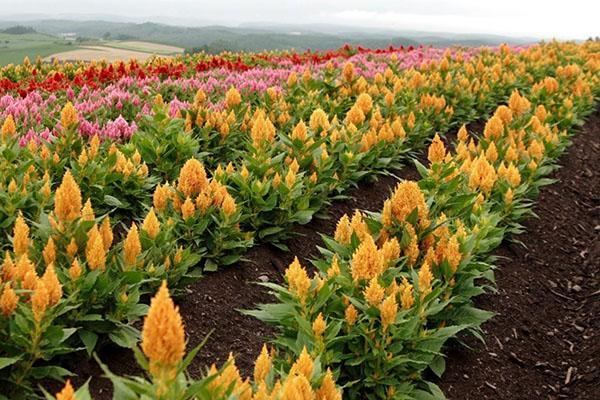Amaranth - a common weed becomes a medicine
 A healthy lifestyle has become so popular that it is being successfully introduced into modern life. So, amaranth has found wide application in many spheres of human life. A wild relative of this herb is the squid. Breeders have taken the trouble to develop wonderful cultivars from it, which far surpassed the weed itself.
A healthy lifestyle has become so popular that it is being successfully introduced into modern life. So, amaranth has found wide application in many spheres of human life. A wild relative of this herb is the squid. Breeders have taken the trouble to develop wonderful cultivars from it, which far surpassed the weed itself.
Today it is grown not only by individuals, but also by entrepreneurs. The yield of the hybrid variety is several thousand times higher than any of its relatives. Small seeds are yellow, red or white. Each part of the plant has unique health benefits.
Grains are sown at the end of March by the surface method (they are buried to 1-2 cm), when the soil warms up as much as possible. Before this, the soil is conscientiously loosened, and also thoroughly moistened to create suitable conditions for the culture for germination.
Amaranth: from planting to harvest
When planting, the seeds are pressed tightly into the ground or the site is slightly tamped so that they do not scatter in the wind, but on the contrary, take root very quickly. They are sown at a distance of 7 cm, and the row spacing is left about 45 cm. The first shoots will appear in the form of delicate leaves. However, then they will instantly grow and by August they will stretch into luxurious ears of up to 50 cm.It is then that it is recommended to pluck fresh amaranth leaves and cook from them:
- salads;
- marinades;
- vegetable dishes;
- teas and compotes.
All this time, the beds are weeded, thus saturating the roots with oxygen. In the fall, the panicles are torn off, enveloped and sent to dry under a small but well-ventilated canopy. Then they are pickled or frozen. Some are left for next year. The culture remains viable for up to 4 years.
Amaranth is recommended for vegetarians and bodybuilders as it serves as an alternative to meat. Its protein and other types of protein help build muscle in a short time.
Application area
Herb seeds are considered a treasury of protein. People of traditional medicine germinate grains, and then attribute the sprouts to patients with complex diseases. Among other things, they make medicinal oil, which is used for medicinal, culinary and cosmetic purposes. The active substances in it amazingly heal wounds, and also regenerate dying skin cells.
Flour is very often used in the preparation of baked goods and for breading cutlets or vegetables. Whole grains are used to make wonderful crispy cakes. They are eaten with vegetable oil or honey. Amaranth is amazingly combined with fruit and vegetables. Many people prepare tinctures from it, crushing the stems, leaves and seeds, and then pouring everything with boiling water or alcohol. Whatever drug is made from it, it can have a beneficial effect on the health of a sick person.